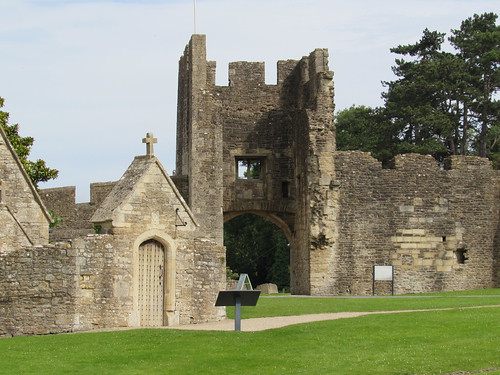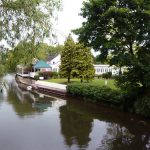Farleigh Castle, Berkshire
Stood in the picturesque valley of the River Frome, the remains of Farleigh Castle are just nine miles from Bath. Today, the castle is surrounded by a dry moat and sections of the original wall. Two of the initial four towers stand at their near original heights. Visitors to the 14th-century castle can enjoy an exploration of the manor house foundations, a Chapel home to 15th-century wall paintings, and the parish church of St. Leonard that originally sat within the castle walls. The castle tells an exciting tale of the notorious Hungerford family who lived within its walls for 300 years.

History of Farleigh Castle
Known as Farleigh Hungerford Castle, it was originally called Farley Montfort Manor House and was built in the 14th century for the namesake family. Eventually, the manor was sold to Sir Thomas Hungerford who changed its name after the Norman Conquest. The four towers that reached a staggering 60 feet were fortified around 1380, with a moat and drawbridge added. Half a century later, in 1420, there was a barbican, courtyard, and a wall surrounding the parish church.
After being handed down through the generations, it was in the hands of Walter Hungerford, who was executed in 1522 for treason against Henry VII. After being in the hands of the monarchy, it was sold to Walter’s son Sir Edward II in 1544 for a large sum.
The last Hungerford to hold the castle was Sir Edward IV, who held it until 1686 when he had to sell it because of his gambling problems. After this, it was subject to a myriad of owners who stripped it down. It was ravaged by war, turned into museum sites, and eventually sold to the English Heritage in 1983.
Things to See and Do at Farleigh Castle
Farley Castle is home to a brilliant gruesome history of the Hungerford Castle – you can learn all about their past through audio tours and see their family tomb in the Chapel. You can also take a tour of the priest’s house, which is now full of historical information and displays the Hungerford armour and a model of the original castle. Take a tour of the remaining two towers and unlock a glimpse into their past; the South West tower is the supposed site that Lady Elizabeth Hunterton was imprisoned by her husband in the 1530s.
The best way to take in everything is to make a day of it and take the audio tour.
Visitor Information
Entry will only set you back £3.40 per adult and less for children and concessions; English Heritage members get free access. You can get to the site by most means of transport. The grounds offer wheelchair access as well as audio descriptions for the hard of hearing. Finally, there are toilets and food outlets on site.
A day out at Farleigh Castle promises to spark the imagination of the historian in all of us. This is a must-see for anyone visiting Bath.

